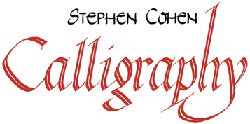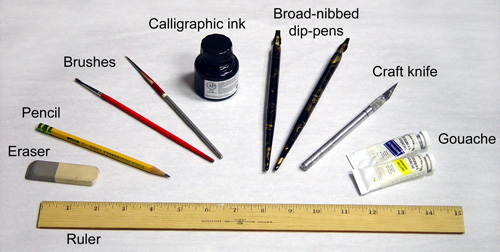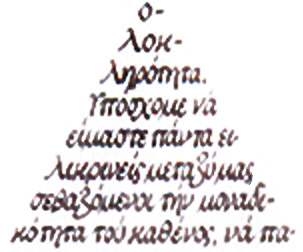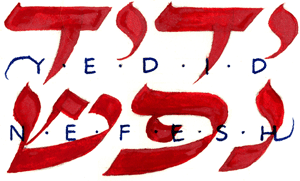
What is calligraphy?
Calligraphy comes from the Greek kalligraphia, meaning "beautiful writing." Calligraphy is an art form dedicated to artistic presentation of letters, words, and text.

Some typical tools of the calligrapher. The pencil, eraser, and ruler are used to create rough drafts of the work. The craft knife is the calligrapher's eraser. Gouache (pronounced "gwash") is a thick, opaque watercolor that gives intense color for illumination.

Part of "A Midsummer Night's Dream" in Roman capitals using orange gouache.
European calligraphy reached a high level in medieval times, just before the introduction of movable type in the 15th century CE. Once books began to be printed using standardized typefaces, calligraphy declined. In the late 19th century, the British art scholar Edward Johnston studied the lost techniques of medieval calligraphers, and began the modern revival of the calligraphic arts. Since then calligraphy has flourished throughout Europe and North America.
 Section
of a Greek document similar to Roman "italic" style in calligraphy ink.
Section
of a Greek document similar to Roman "italic" style in calligraphy ink.
Other cultures, particularly in the Middle East and Asia, have continued practicing calligraphy since ancient times as well. Western calligraphy is primarily written with a broad-tipped pen, while Eastern calligraphy is written with a brush, although many calligraphers from all parts of the world use both tools.
Hebrew calligraphy never completely disappeared after medieval times: a Torah scroll or a mezuzah is always hand-written using specially prepared inks, pens, and parchment. A Jewish marriage contract (ketuba) is another popular item of Hebrew calligraphy. Other items might include a Mizrach (artwork indicating East, towards Jerusalem), a Haggadah (Passover ritual book), or specific prayers.

"Yerushalmi" script of the word "bat-mitzvah" using red gouache.
Modern Hebrew calligraphy is primarily written with a broad-tipped pen. Unlike the Roman alphabet, which is vertically oriented and stands upright on an imaginary guide-line, the Hebrew alphabet is horizontally oriented (like Arabic), and hangs down from an imaginary guide-line (like Hindi). This creates special artistic challenges for the bilingual calligrapher: how to harmonize competing lettering to create a unified whole.
 Bilingual
title, using Hebrew "Rolit" and a Roman "sans-serif" with red and blue
gouache.
Bilingual
title, using Hebrew "Rolit" and a Roman "sans-serif" with red and blue
gouache.
We in the age of computerization have forgotten that calligraphy is done by hand. Calligraphers write or paint their lettering. They do not use stencils. They practice many, many long hours to gain proficiency over various lettering styles. Some calligraphers illuminate their words with natural or imaginary scenes, using paints, inks, gouaches (opaque watercolors), pastels, or even metallic leaf. Even the choice of paper affects the final appearance: rough paper gives a more ragged look to lettering. Colored paper offers a different mood.
Contact me for more details at